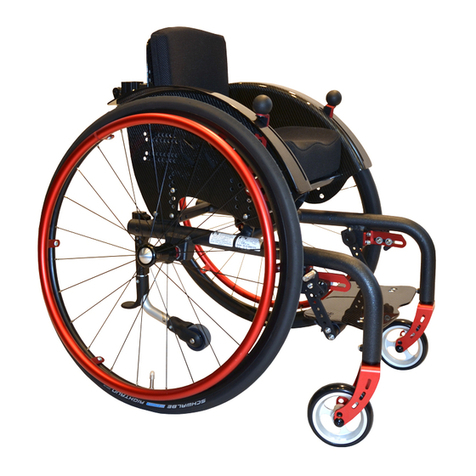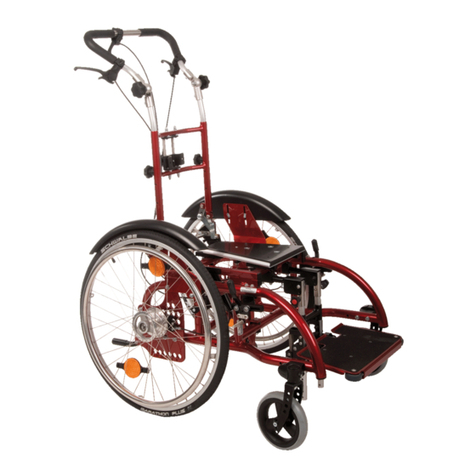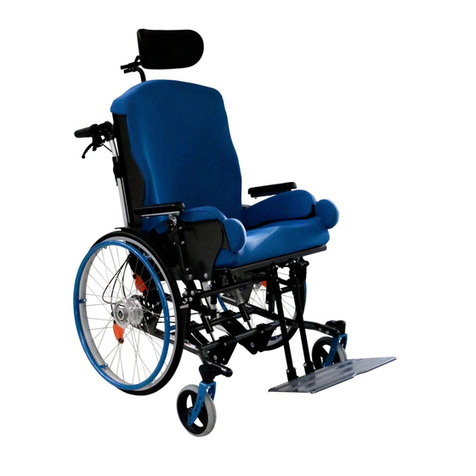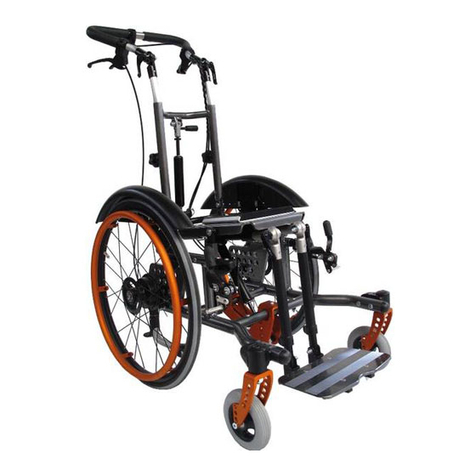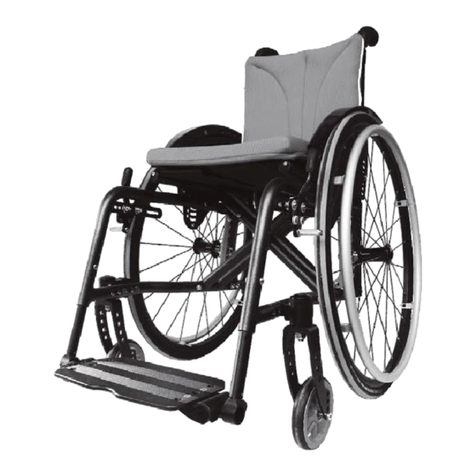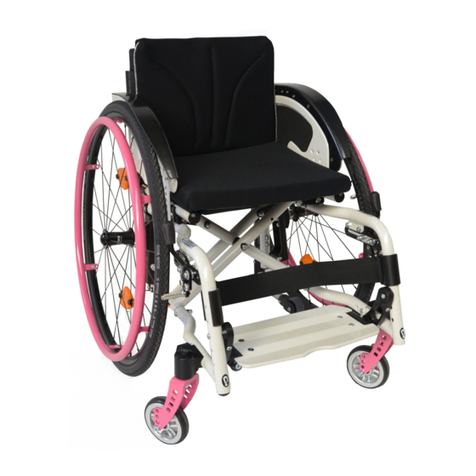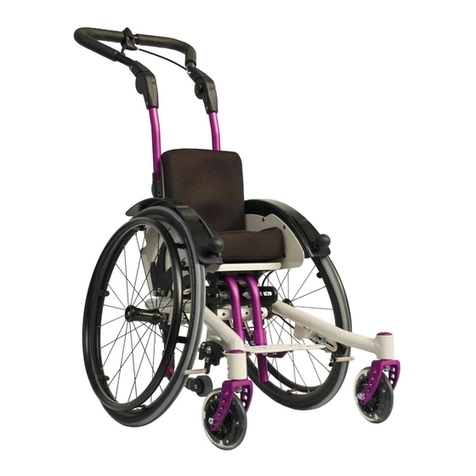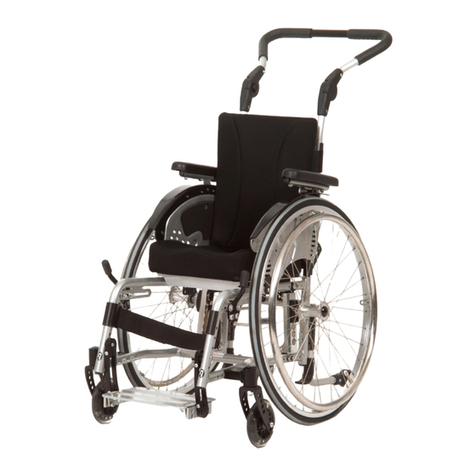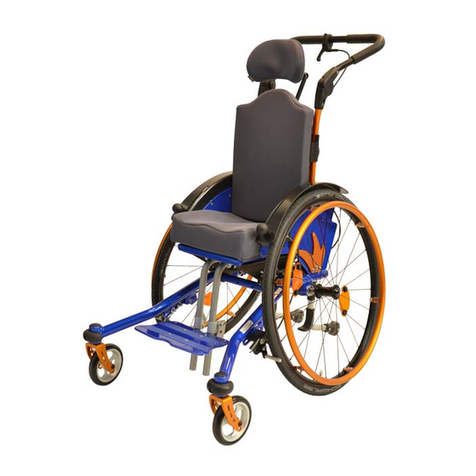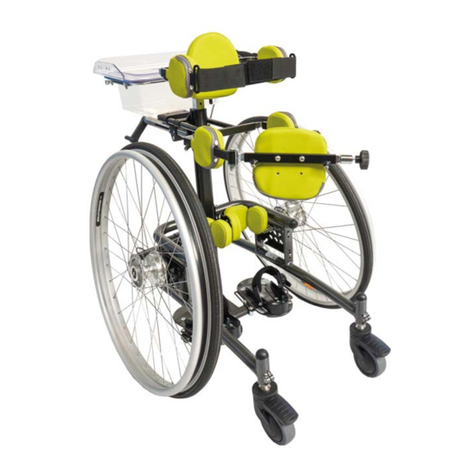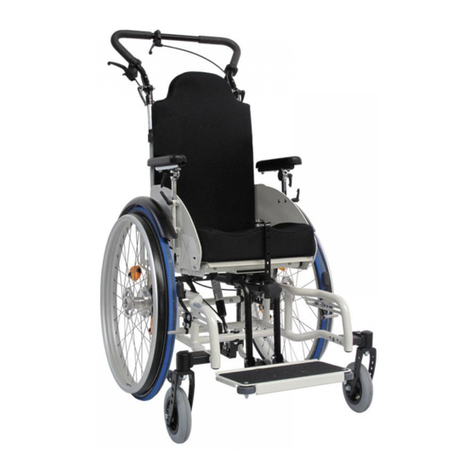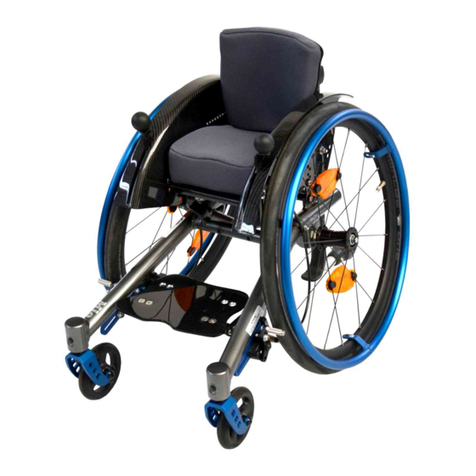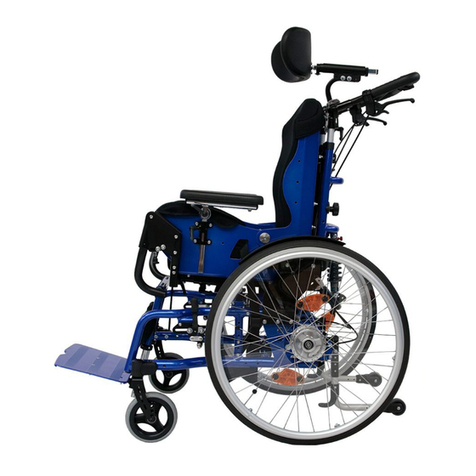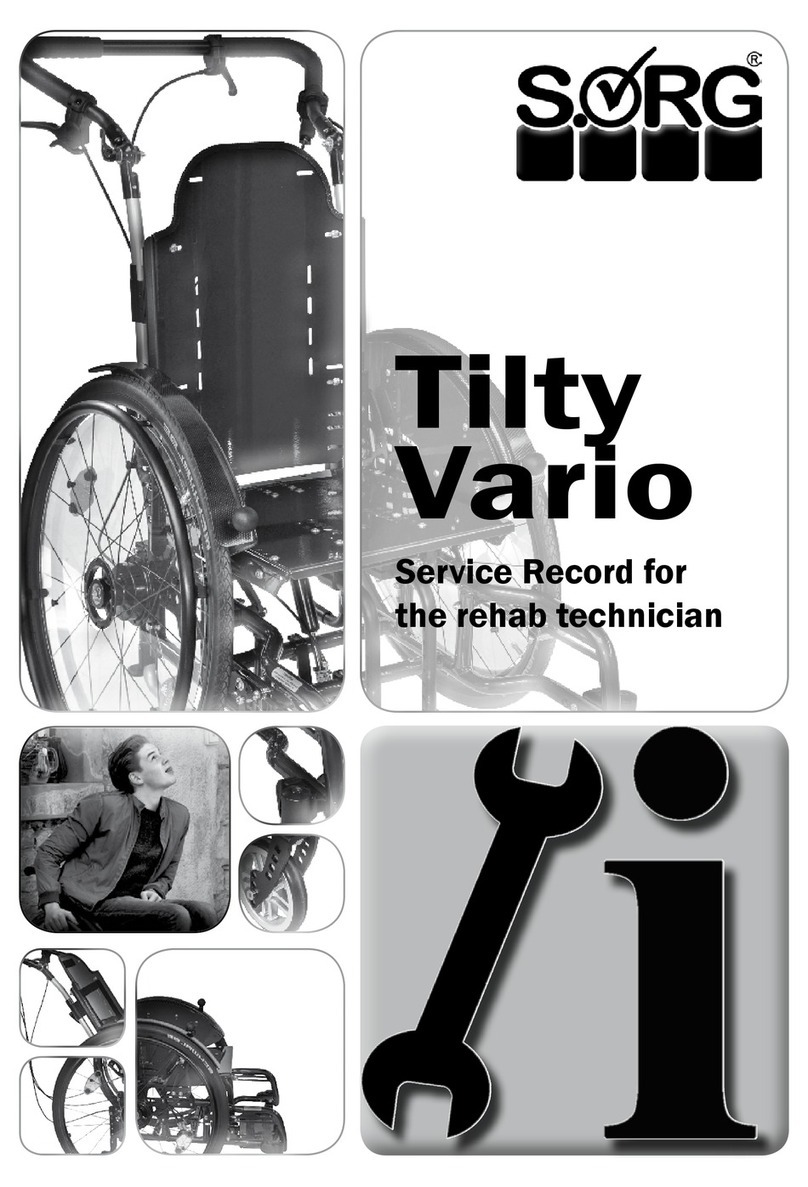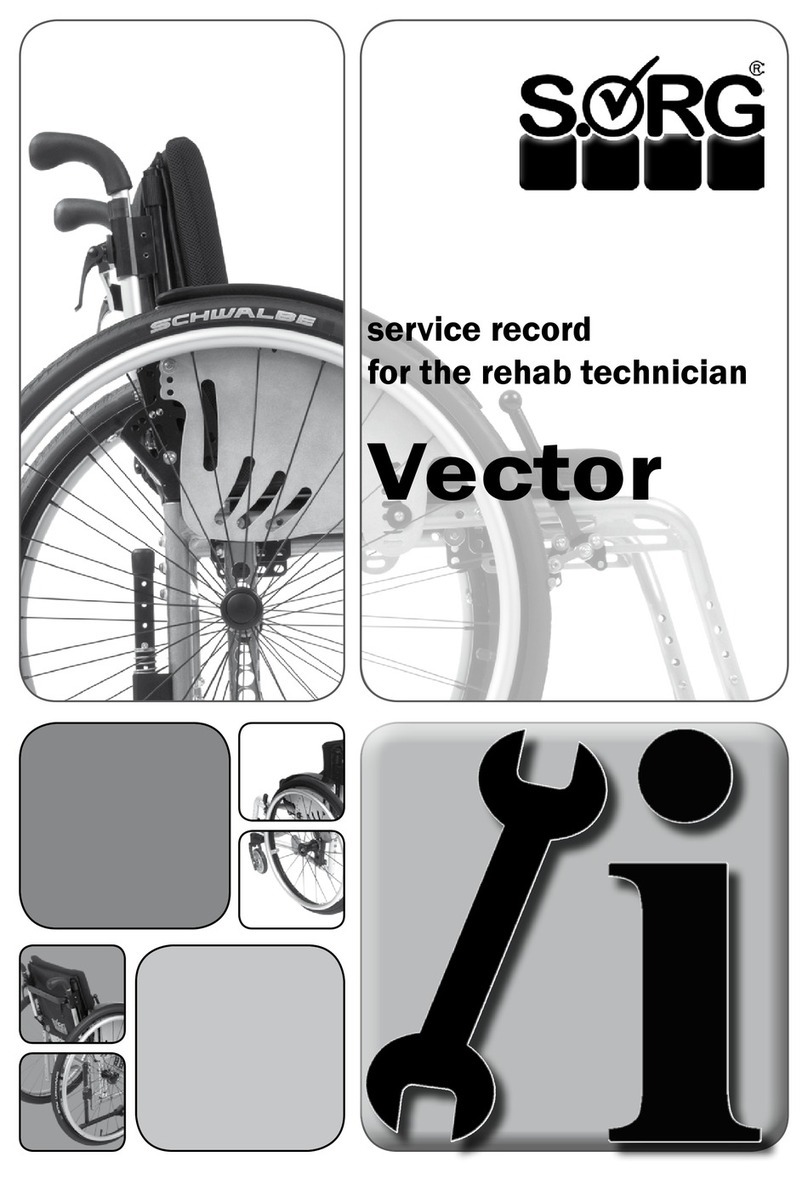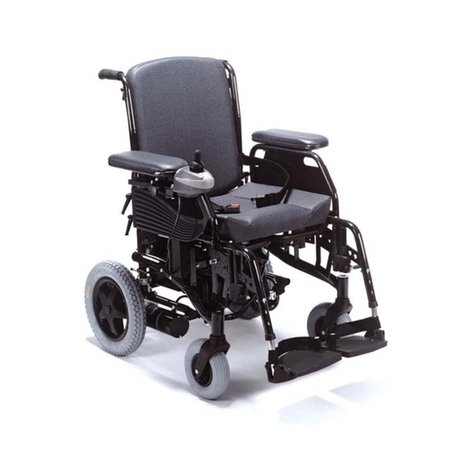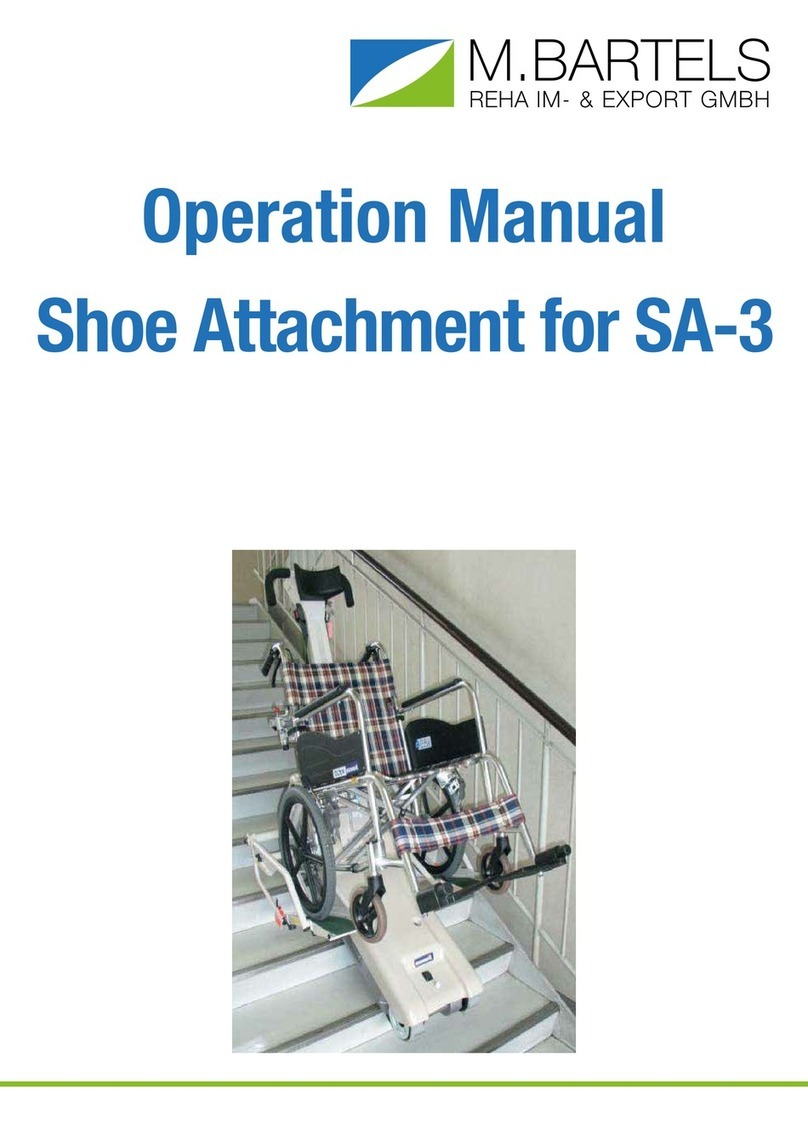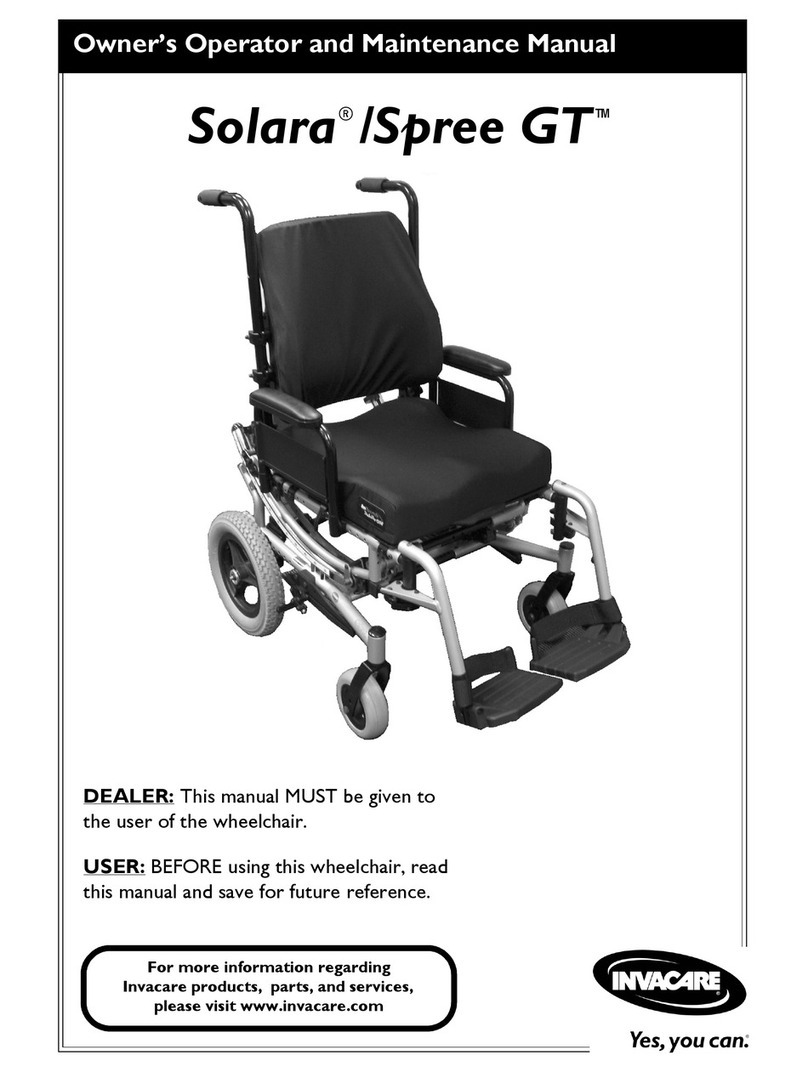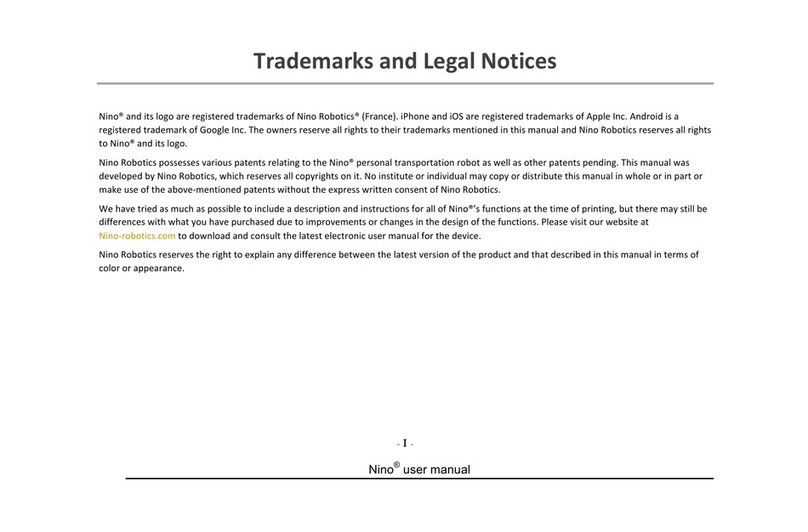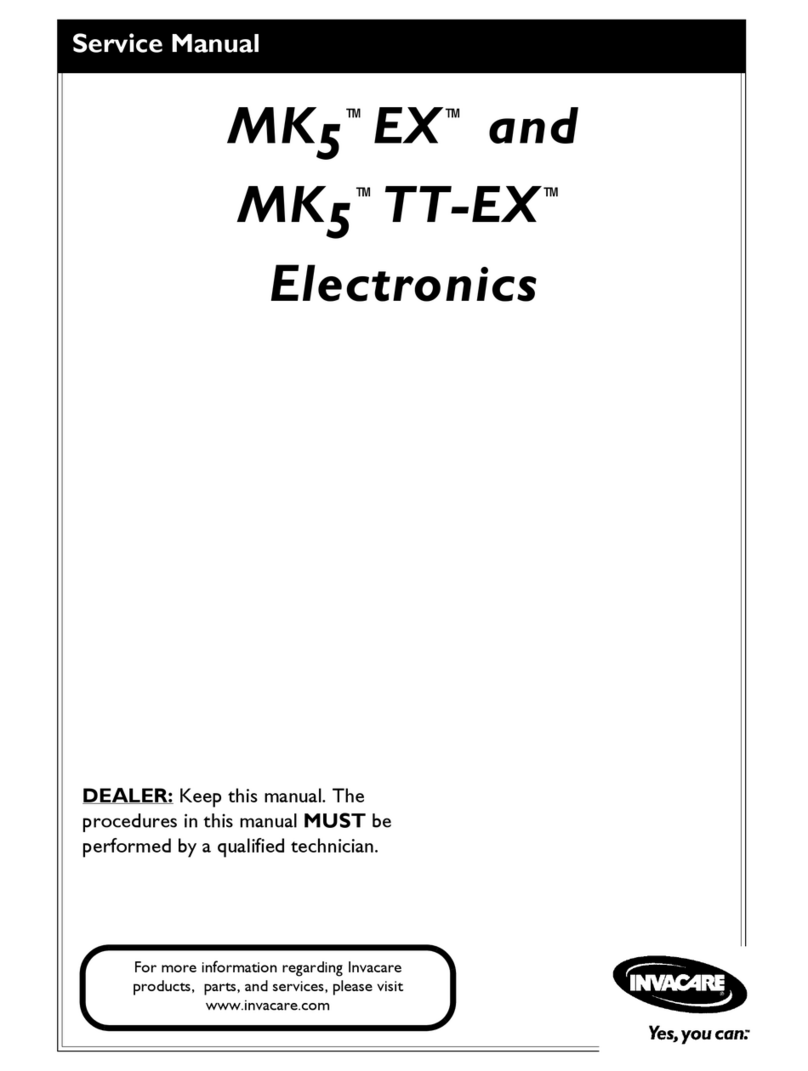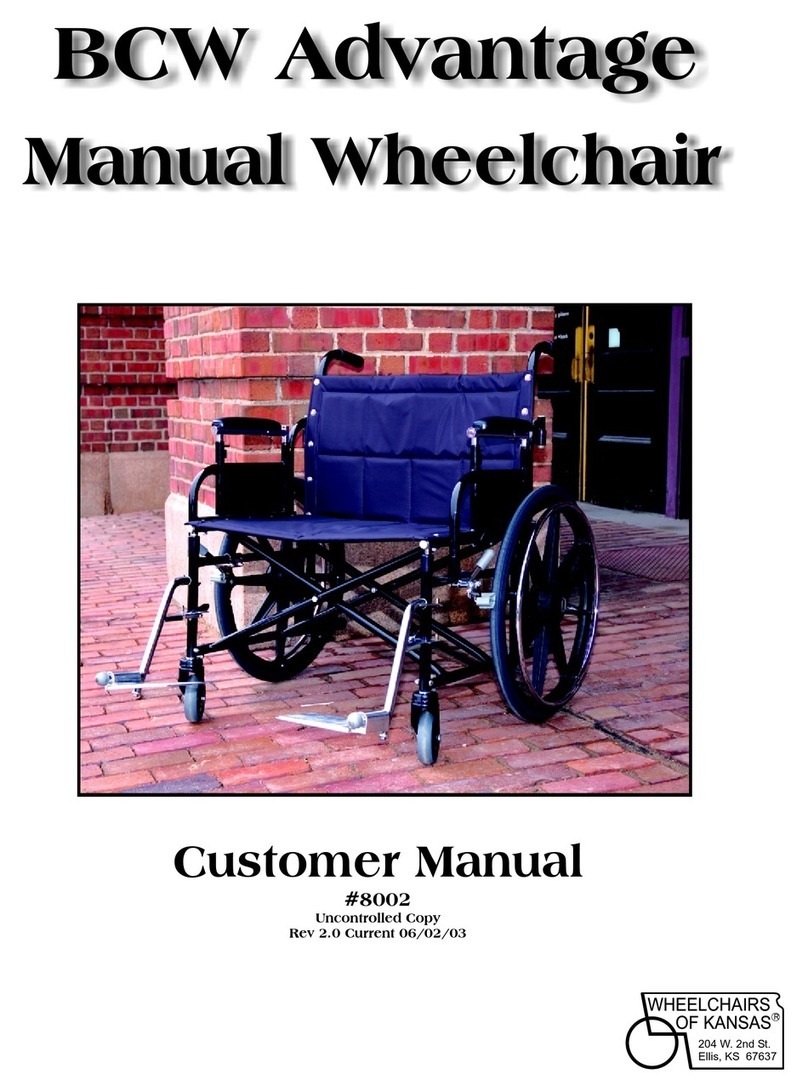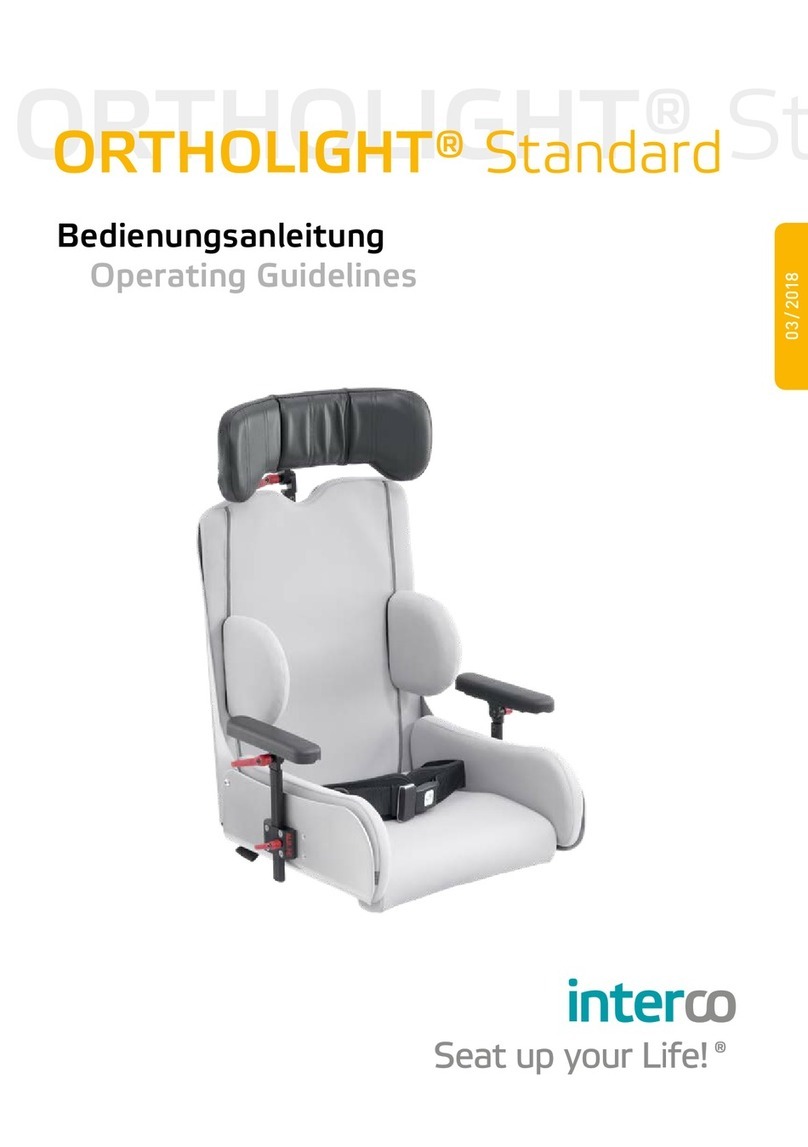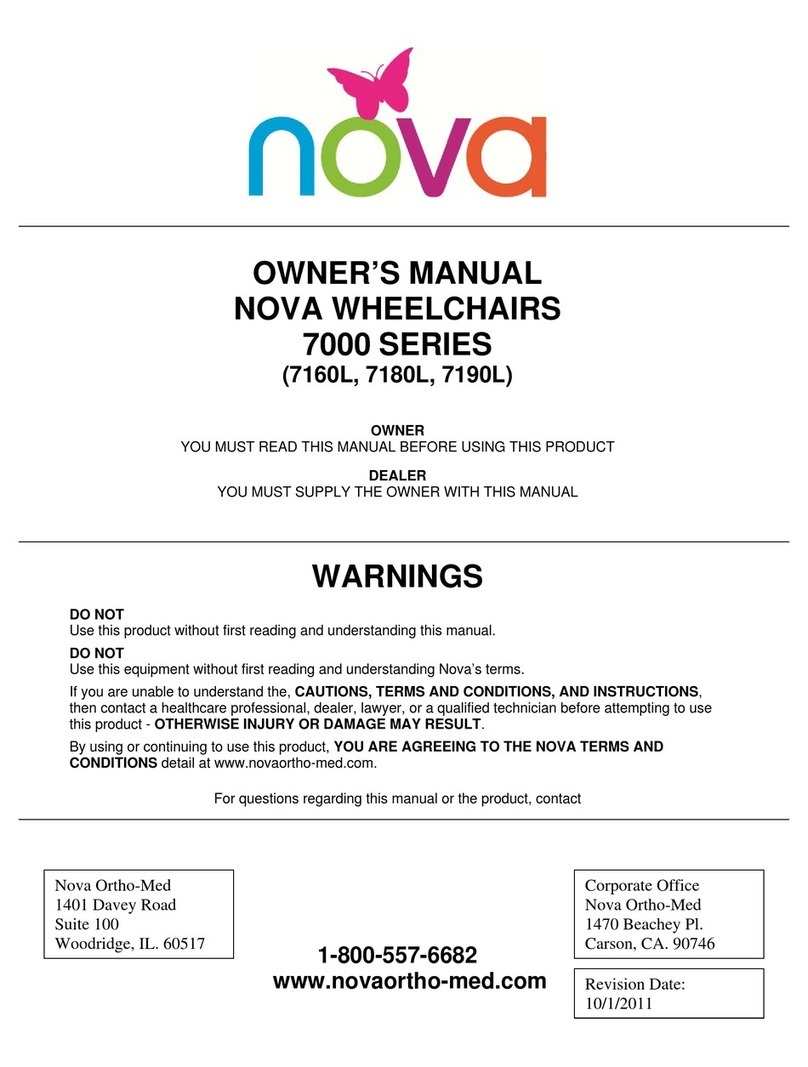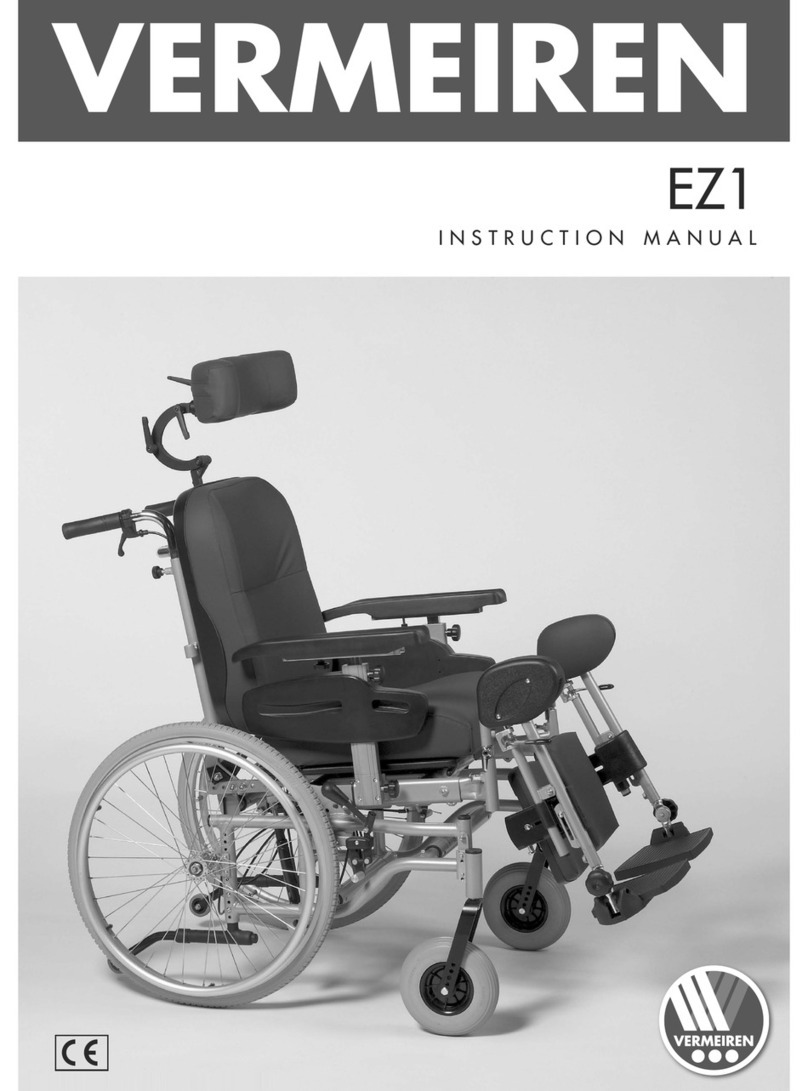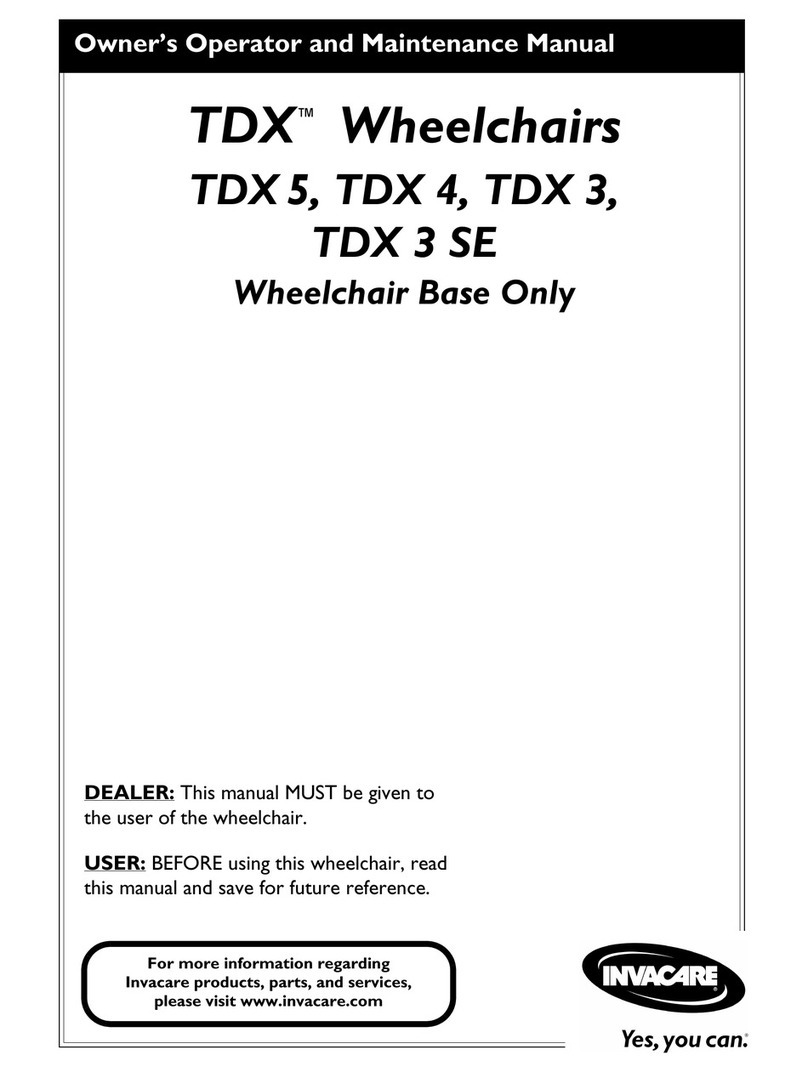5
1 Preamble
1.1 GENERAL INFORMATION
The wheelchair has been built, adjusted and given to
you operable according to your individual instructions.
A qualied Technician will make any changes
necessary, should modication be needed during use.
As any other aid, a wheelchair is a technical device
that can hold risks if not properly used. This brochure
is to help you familiarize yourself with the wheelchair
and its functions.
ATTENTION
Read the following instructions and manuals
carefully.
• User manual
• Info-brochure Crash Test ISO 7176-19
ATTENTION
If the user of the wheelchair is a child or a person
with limited competence, the parents or authorized
supervisor have to make sure that they have fully
understood the handling of the wheelchair before it
is rst used.
If you have any questions your medical supply store
or our competent team is glad to assist you (+49
07254/92790).
This user manual is directed to both you and your
rehab technician. It contains instructions on the
correct adjustments of Jump to your physical
situation.
1.2. SIGNS AND SYMBOLS
ATTENTION
This is how individual-related safety aspects of
utmost importance are indicated.
�INDICATION
This is how possible indications of utmost
importance are labelled.
INFORMATION
This is how INFORMATION on mounting and
adjustment work is labelled.
READ
This refers to other chapters within the brochure or to
additional material.
BOLD PRINT
Text in bold print highlights important passages or
remarks.
1.3 INDICATION
Mio is a small, light, active wheelchair which can grow
for children 12 months of age. Mio has two frame
variations (retro and Taurus) with two differently
strong v-shaped abductions and a xed camber of 9°.
The seat-back-unit can be precisely set according to
the shoulder-rear wheel-position for an ideal gripping
point. Mio is also suitable as a base for a seat shell
build.
It is indicated by/to:
• brittle bone disease (BBD)
• all forms of neuromuscular sicknesses
• all forms of muscular atrophy
• all forms of muscular dystrophy
• muscular torso-hypotension
• infantile Cerebral Palsy
• Spina bida
• spinal amyotrophy
• progressive muscular dystrophy
• restricted or missing head control
• muscle changes
• skeletal deformities
• build and strengthen the whole bone
structure
• build and activate the whole muscle tone
• reactivate after a severe concussion
• stabilize scoliosis
• regulate dyskinesia
With the Mio, the following therapeutic goals can be
supported:
• vestibular stimulation
• transfer of the perception of mobility with, at
the same time, an upright stance
• preservation, developing and/or
strengthening of the entire muscle tonicity
• preservation, developing and/or
strengthening of (auto-)mobility
• stabilizing the torso and putting it into an
upright position
• skeletal stabilization, strengthening of the
spine
• stimulation and stabilization of the
metabolism and circulation
• participation in social life (inclusion)
1.4 COUNTER INDICATION
Mio is counter indicated by:
• tonicity deregulation
• perception disorders
• high disturbances of equilibrium
• limb loss on both arms
• joint contractures/joint damages on both
arms
• unable to sit
• not enough eyesight

